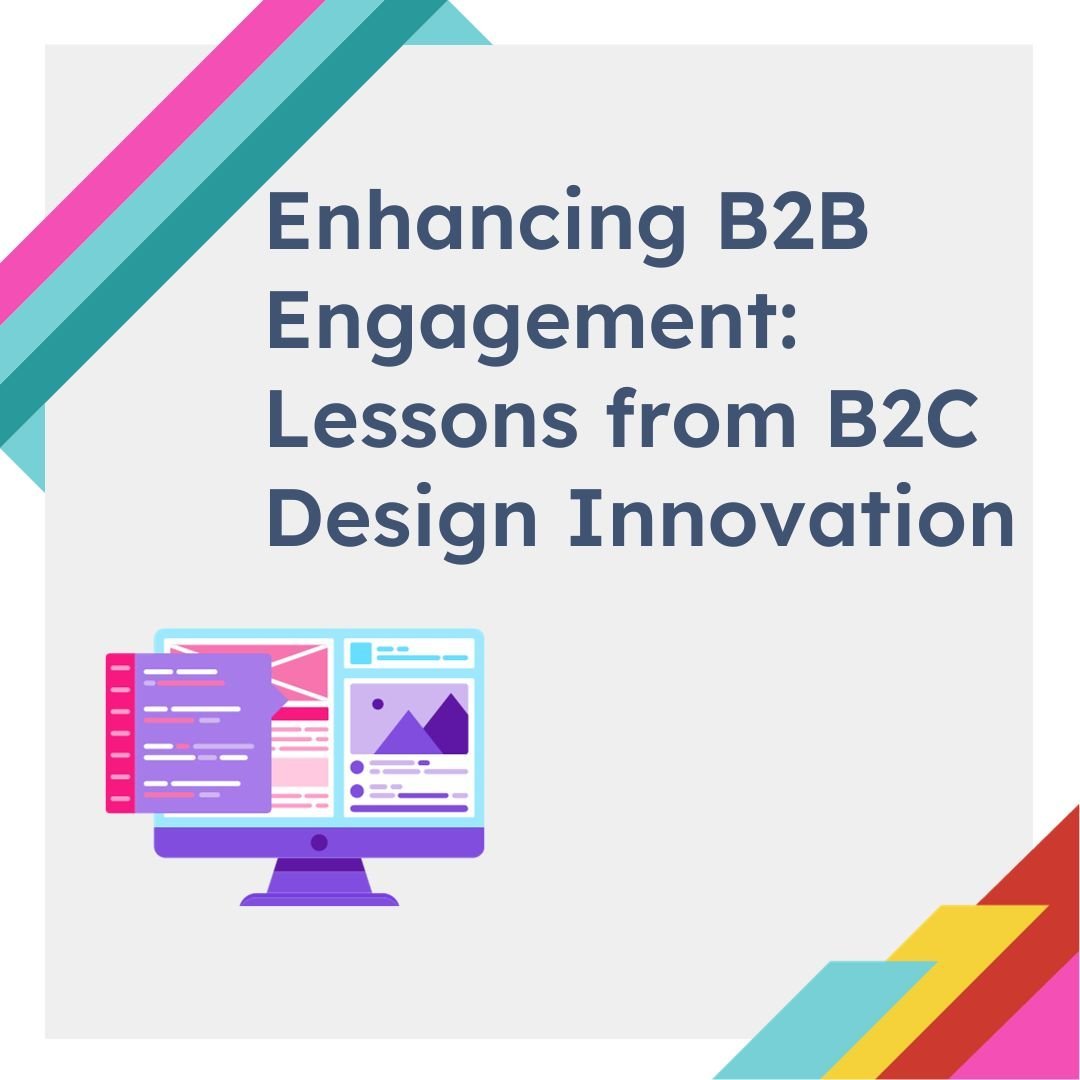In the moving target that is the everchanging digital landscape, the design of a website plays a crucial role in attracting and retaining customers. B2B (business-to-business) or wholesale sites, traditionally more practical and informational in design, can benefit significantly by adopting strategies from B2C websites. In this article, we will explore how B2B and wholesale websites can elevate their design game by learning some of the most valuable lessons from their B2C counterparts.
Focus on First Impressions
B2C websites are renowned for making an immediate impact, and these B2B sites can leverage this approach to their advantage. Wholesale sites can often look in the style of a catalogue, providing as much product information as possible in a compact format, but this can be overwhelming at first impressions, with users unsure of how to find what they’re looking for. According to a study from Think with Google, as the number of elements – text, titles, images – on a page goes from 400 to 6,000, the probability of conversion drops 95%. A B2B site that employs engaging visuals, clear messaging, and an inviting layout can capture interest quickly and effectively. Never underestimate the importance of a user’s first impression when entering your site.
Ease of Use
The hallmark of a well-designed B2C site lies in its intuitive navigation and straightforward shopping experience, built for conversion rate optimisation. B2B and wholesale sites can enhance customer engagement and boost performance by simplifying the user journey. A complicated site navigation often results in confusion and can often lead potential convertors to abandon the site without much consideration. Therefore, streamlining the user experience is paramount for B2B platforms just as much as consumer-facing sites.
Unified Approach
Integrating both B2B and B2C elements into a single platform can lead to smarter operations and a cohesive brand experience. Content management systems like Shopify Plus and BigCommerce help make this extension seamless for e-commerce businesses to manage. This integration allows businesses to cater to both markets without compromising on functionality or aesthetics. A unified approach ensures consistency and efficiency, providing a seamless experience for users regardless of their business type.
Brand Control
Direct-to-consumer models provide an opportunity for brand storytelling and the best e-commerce businesses with the highest lifetime value ensure on building this connection with the user. This approach adds a layer of personality to the transactional nature of B2B interactions, encouraging customers to want to a stake in the business. By bringing this element into the B2B space, wholesale sites can not only foster a stronger connection with their audience, but also perfect a solid brand identity and determine B2B-specific brand positioning.
Leveraging E-commerce Strategies
Incorporating B2C e-commerce tactics can elevate the customer shopping experience on B2B sites. Features such as product recommendations, customer reviews, and a streamlined checkout process can significantly enhance user engagement. Positive customer reviews, in particular, can act as powerful endorsements, influencing potential clients and contributing to the success of the website. As with standard consumer-facing e-commerce sites, building trust through offering points of social proof, is pertinent in securing new customers who you wish to have a continued relationship with.
Optimised for Conversion
As previously stated, larger B2C e-commerce websites are often meticulously optimised for sales conversions. B2B sites can borrow from these design principles and best practices to guide users toward making a purchase or initiating communication for bulk orders through enhanced user experience. Whilst some final steps to conversion are more complex when dealing B2B, getting users to that point. Implementing clear calls-to-action, strategically placed contact forms, and transparent pricing can contribute to a website that not only attracts but also converts potential clients into customers.
Conclusion
By embracing the user-friendly and visually appealing designs pioneered by B2C websites, B2B and wholesale sites can significantly enhance the overall user experience and therefore the performance of these websites. Streamlining the path to purchase, fostering a stronger brand connection, and incorporating e-commerce strategies are key steps toward driving business growth in an increasingly competitive digital landscape. As B2B platforms continue to evolve, the integration of innovative design practices will undoubtedly play a pivotal role in shaping their success.
This article is the first of a series of B2B topics we will be focusing on over the next few weeks as experts in helping many online businesses integrate this element into their e-commerce strategy. Successfully executed B2B strategies for e-commerce can be challenging, but if done well, can prove invaluable in scale. If you would like to find out more about Studioworx’s expertise in this field, get in touch to find out more about how we can specifically help your business.
